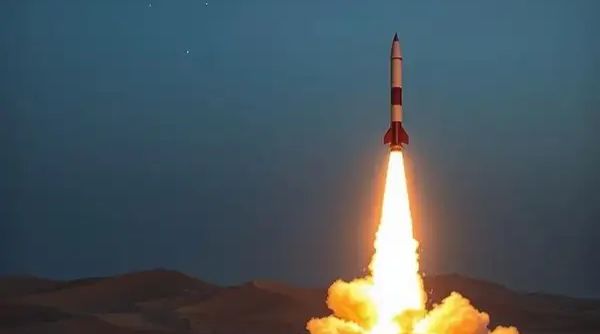 Image Source: Economic Times
Image Source: Economic Times
Iran's recent missile strike on Israel saw the Islamic Revolutionary Guard Corps (IRGC) employ the Sejjil missile for the first time during the war, a new development in the military buildup in the region.
Key Highlights:
• Type and Range: The Sejjil is a domestically produced, solid-fueled, two-stage medium-range ballistic missile (MRBM) with a reported range of up to 2,000 km, allowing it to strike deep in Israel from Iranian territory.
• Payload and Power: It has a 700 kg warhead, and it is one of Iran's most powerful and accurate strategic missiles. Its solid-fuel design enables rapid launch and greater mobility than conventional liquid-fueled missiles.
• First Combat Use: The June 2025 attack was the first known combat deployment of the Sejjil against Israel as part of Iran's "Operation True Promise III." The missile was launched in retaliation for Israeli strikes against Iranian military and nuclear targets.
• Impact and Interception: Sejjil missile was said to have been intercepted by Israeli defenses; the attack, however, underscored Iran's ability to fire advanced, long-range ballistic missiles capable of penetrating even the best defense systems.
Prospects Launch of the Sejjil missile is a peak in Iran-Israel tensions, representing Iran's developing missile technology and posing a threat to regional stability. As the two develop their military posture, deployment of the type of advanced weapons can tip the balance of power and attract further international interest and intervention.
Source: Newsweek, Firstpost, Institute for the Study of War
Advertisement
Advertisement




